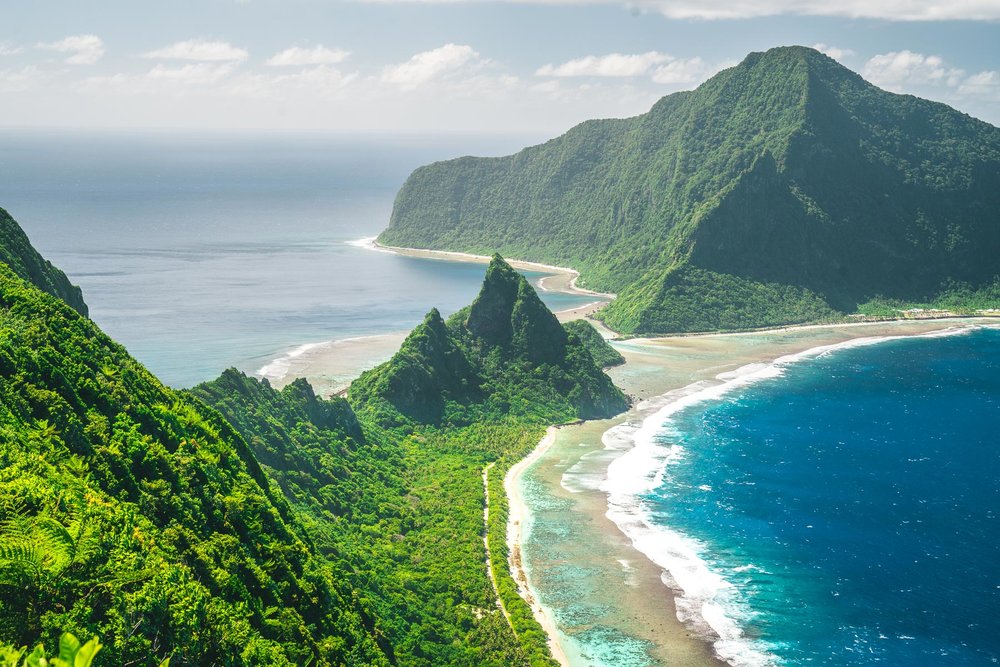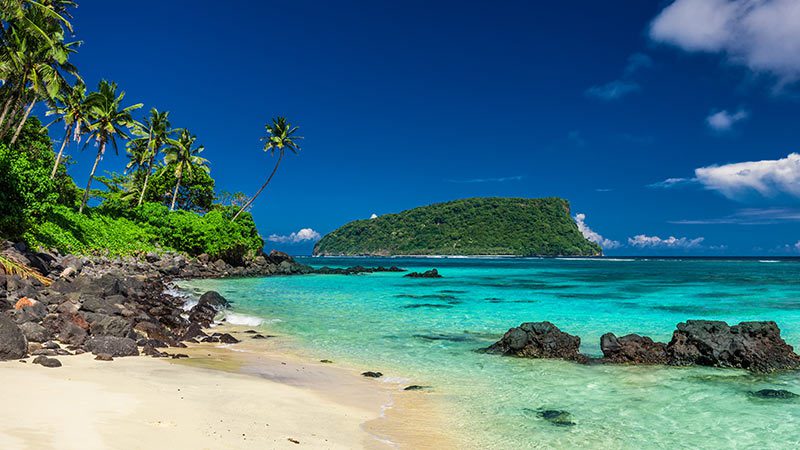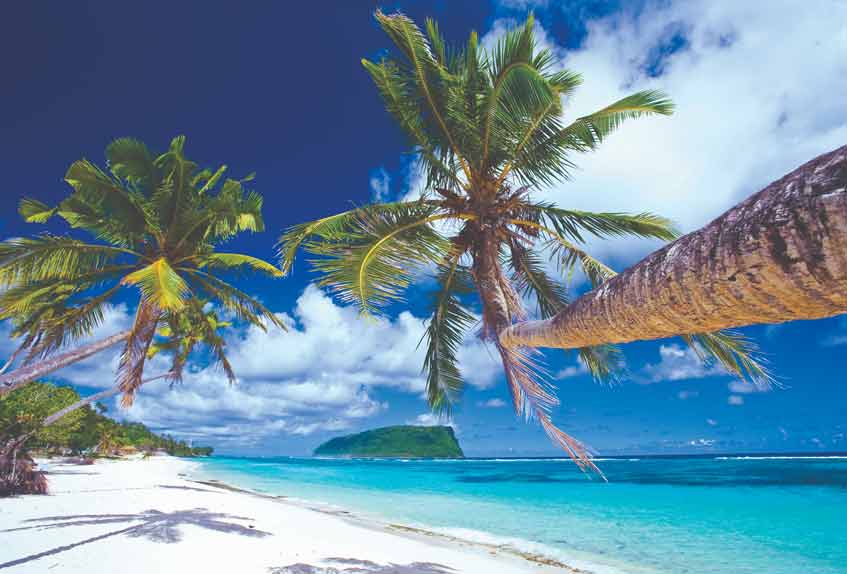
Samoa, often hailed as the "Treasured Islands" or the "Heart of Polynesia," is a destination that feels plucked from a dream. Here, the pace of life slows to the rhythm of the ocean, ancient traditions are woven into the fabric of daily existence, and natural beauty unfolds in a spectacular array of volcanic landscapes, pristine beaches, and shimmering lagoons. For the discerning traveler seeking an authentic South Pacific experience untouched by mass tourism, Samoa offers an enchanting blend of adventure, relaxation, and profound cultural immersion.
This comprehensive guide will equip you with everything you need to plan your journey to Samoa, from understanding its rich history and navigating its islands to discovering its top attractions, finding the perfect place to stay, and embracing the unique "Fa’a Samoa" – The Samoan Way.

Related Articles about Samoa: Navigating the Heart of Polynesia – An Unforgettable Journey:
- Marrakech: A Symphony of Senses, and Where to Rest Your Head in its Embrace
- Dublin: A City Steeped in Song, Stories, and Spirit
- Palatial Stays and Historic Charms: Unveiling the Best Hotels in the United Kingdom
- Osaka: A Culinary and Cultural Kaleidoscope
- Hong Kong: A Symphony of Skyscrapers, Spice, and Soul
A Glimpse into Samoa’s Soul: History and Culture
To truly appreciate Samoa, one must first understand the profound depth of its history and the enduring strength of its culture, known as Fa’a Samoa.
Historical Tapestry:
Samoa’s story began over 3,000 years ago with the arrival of Lapita people, ancestors of modern Polynesians, who navigated the vast Pacific using sophisticated traditional knowledge. It became a cradle of Polynesian culture, exerting significant influence across the region. European contact began in the 18th century, followed by missionaries and traders in the 19th century, leading to a complex period of colonial rivalry. Germany, Britain, and the United States vied for control, ultimately resulting in the division of the Samoan islands. Western Samoa (today’s independent Samoa) became a German colony in 1899.
At the outbreak of World War I, New Zealand forces occupied German Samoa, and it remained a New Zealand trust territory for decades. However, the seeds of independence were sown early. The Mau movement, a powerful non-violent resistance, galvanized the Samoan people, leading to Western Samoa becoming the first Pacific island nation to gain independence in 1962. This journey of self-determination is a source of immense national pride and is deeply ingrained in the Samoan psyche.
The Heartbeat of Fa’a Samoa:
More than just a set of customs, Fa’a Samoa is a way of life, a moral compass that guides every aspect of Samoan society. It emphasizes:
- Aiga (Family): The extended family unit is paramount, offering a strong support system and defining one’s identity.
- Matai (Chiefly System): The matai (chiefs) are custodians of traditions, land, and the well-being of their villages. Their authority is respected and central to community governance.
- Lotu (Church): Christianity, introduced by missionaries, has been deeply integrated into Fa’a Samoa. Sundays are dedicated to church, family, and rest, with villages often observing a quiet period (sa) for prayer.
- Service and Respect: Humility, hospitality, and respect for elders and authority are fundamental values. Visitors are often struck by the genuine warmth and generosity of the Samoan people.

Understanding and respecting Fa’a Samoa is key to a meaningful travel experience. It means dressing modestly outside of resorts, especially when visiting villages or churches, and being mindful of local customs.
Getting There: Your Gateway to Paradise
Samoa is served by Faleolo International Airport (APW), located on the western side of the main island of Upolu, approximately 34 km from the capital, Apia.
International Flights:
Direct flights to Faleolo are available from several major hubs in the Pacific and beyond:
- Fiji Airways: Offers connections from Nadi (Fiji), which in turn connects to numerous international destinations (North America, Asia, Australia, New Zealand).
- Air New Zealand: Provides direct services from Auckland (New Zealand).
- Qantas & Virgin Australia: Offer direct flights from Sydney and Brisbane (Australia).
- Hawaiian Airlines: Connects Samoa with Honolulu (USA), providing a link to North America.
It’s advisable to book flights well in advance, especially during peak seasons (June to September and December/January). Layovers in Fiji or New Zealand are common for travelers from further afield, offering a chance to break up the journey.
Visa Requirements:
Samoa has a very welcoming visa policy. Citizens of most countries, including Australia, New Zealand, the USA, Canada, the UK, and EU nations, are granted a 60-day visitor permit on arrival, provided they have:
- A passport valid for at least six months beyond their intended stay.
- A confirmed onward or return ticket.
- Sufficient funds for their stay.
- Proof of accommodation.
Always check the latest visa requirements for your specific nationality with the Samoan High Commission or Embassy in your country before travel, as policies can change.
Navigating the Islands: Transportation Within Samoa
Once you’ve arrived, getting around Samoa is part of the adventure. The two main islands, Upolu and Savai’i, offer distinct experiences and require different modes of transport.
1. Rental Cars:
Undoubtedly the most flexible and recommended way to explore Samoa, especially if you plan to visit multiple attractions across Upolu and Savai’i.
- Driving Side: Samoa drives on the left-hand side of the road.
- Temporary Driver’s Permit: You will need to obtain a temporary Samoan driving permit (WST$20-25) from the Land Transport Authority office in Apia or at the airport, or sometimes directly from your rental company, upon presentation of your valid foreign license.
- Road Conditions: Main roads are generally paved and in good condition, but village roads and routes to more remote attractions can be unpaved, potholed, or rough. A 4×4 vehicle is often recommended, particularly for exploring Savai’i.
- Fuel: Petrol stations are available in Apia and larger villages, but less frequent in remote areas. Plan your fuel stops accordingly.
2. Local Buses:
For a truly authentic and budget-friendly experience, hop on a local bus. These brightly painted, often open-sided vehicles are a cultural institution.
- Routes & Schedules: Buses operate from Apia’s Fugalei and Savalalo markets to various villages. Schedules are informal; buses leave when full, and journeys can be slow, with frequent stops.
- Experience: Expect loud music, lively conversations, and often crowded conditions. It’s a fantastic way to interact with locals.
- Cost: Extremely cheap, making it ideal for short village-to-village hops.
3. Taxis:
Readily available in Apia, at the airport, and around major tourist areas.
- Fares: Fares are generally not metered, so it’s crucial to agree on a price with the driver before starting your journey.
- Airport Transfers: Pre-booking an airport transfer through your accommodation is often the most convenient option upon arrival.
4. Ferries Between Upolu and Savai’i:
Connecting the two main islands is easy and efficient.
- Route: Ferries depart from Mulifanua Wharf on Upolu (near the airport) to Salelologa Wharf on Savai’i.
- Services: Samoa Shipping Corporation operates several ferries, including the larger MV Lady Naomi and smaller roll-on/roll-off vessels.
- Frequency: Multiple daily departures, though schedules can change, especially on Sundays. It’s advisable to check the latest timetable online or at the wharf.
- Booking: You can purchase tickets at the wharf on the day of travel. If you plan to take a rental car across, it’s highly recommended to book your car’s space in advance, especially during peak times.
Where to Stay: Accommodation Options for Every Traveler
Samoa offers a diverse range of accommodation, from luxurious resorts to charming traditional fales, catering to different budgets and travel styles.
1. Resorts and Hotels:
Predominantly found on Upolu, particularly along the picturesque south coast (e.g., Lalomanu Beach) and around Apia.
- Luxury & Amenities: These offer modern comforts, swimming pools, restaurants, bars, and often organized activities. Examples include Sinalei Reef Resort & Spa, Saletoga Sands Resort, and Seabreeze Resort.
- Family-Friendly: Many resorts cater to families with kids’ clubs and family-sized rooms.
- Location: Apia hotels are convenient for city amenities and business, while coastal resorts offer direct beach access and stunning views.
2. Traditional Beach Fales:
This is the quintessential Samoan accommodation experience and a must-try for those seeking cultural immersion.
- Rustic Charm: Fales are open-sided, thatched huts (though some offer enclosed options) usually set directly on the beach, with a mat on the floor and mosquito net.
- Community Operated: Many are run by local families or villages, providing an income source and a direct connection to Fa’a Samoa.
- Inclusions: Typically include breakfast and dinner, often served family-style, allowing guests to mingle.
- Experience: Fall asleep to the sound of waves, wake up to breathtaking sunrises, and embrace a simpler way of life. They are generally basic but clean and offer unparalleled views. Shared bathroom facilities are common.
- Locations: Abundant on both Upolu (especially Lalomanu) and Savai’i (Manase, Lano).
3. Guesthouses and Budget Stays:
Found in Apia and some larger villages, these offer a more affordable option, often with private rooms and shared facilities.
- Local Feel: Often family-run, providing a more intimate atmosphere.
- Self-Catering: Some may offer kitchen facilities, ideal for budget travelers.
Booking Tips:
- Advance Booking: Essential, especially for resorts and popular beach fales during the dry season (May-October).
- Read Reviews: Check recent reviews to manage expectations, especially for fales where standards can vary.
- Direct Booking: Sometimes booking directly with smaller fales or guesthouses can secure a better rate or more personalized service.
Samoa’s Crown Jewels: Top Attractions and Experiences
Samoa’s natural beauty is its greatest asset, with attractions ranging from dramatic blowholes to serene waterfalls and idyllic beaches.
Upolu Highlights:
- To Sua Ocean Trench: (Must-see!) A breathtaking natural swimming hole, formed by volcanic activity, featuring a deep, clear turquoise pool accessed by a long wooden ladder. Surrounded by lush gardens, it’s an iconic and unforgettable experience.
- Lalomanu Beach & ‘Aleipata District: Consistently ranked among the world’s most beautiful beaches. White sands, palm trees, and calm, reef-protected waters make it perfect for swimming, snorkeling, and relaxing in a beach fale. The wider ‘Aleipata district offers stunning coastal drives and picturesque villages.
- Papase’ea Sliding Rocks: Natural water slides where you can glide down smooth, moss-covered rocks into cool freshwater pools. A fun and exhilarating activity, especially after rain.
- Sopoaga Waterfalls: A powerful and scenic waterfall cascading into a lush jungle gorge. A well-maintained viewing platform offers spectacular photo opportunities.
- Robert Louis Stevenson Museum (Villa Vailima): The beautifully restored former home of the famous Scottish author, who spent his final years in Samoa. Learn about his life, his love for Samoa, and hike to his tomb on Mount Vaea for panoramic views.
- Palolo Deep Marine Reserve: Just off Apia, this marine protected area is a fantastic spot for snorkeling and diving, teeming with vibrant coral and tropical fish.
- Piula Cave Pool: A natural freshwater spring emerging from a cave into a serene swimming pool, flowing directly into the ocean. A refreshing stop on the east coast.
- Apia Markets (Fugalei & Savalalo): Immerse yourself in local life. Fugalei Market is a vibrant hub for fresh produce, while Savalalo Flea Market (though rebuilt after a fire) offers handicrafts, clothing, and souvenirs.
Savai’i Highlights:
Known as "The Big Island," Savai’i is less developed, wilder, and offers a deeper dive into traditional Samoan life.
- Afu Aau Waterfall (Olemoe Falls): A spectacular waterfall that plunges into a deep, clear freshwater pool, perfect for swimming. Surrounded by dense rainforest, it’s a serene and picturesque spot.
- Alofaaga Blowholes: Witness nature’s raw power as waves crash into volcanic rock formations, sending geysers of seawater shooting high into the air. Best seen at high tide.
- Saleaula Lava Fields: Explore the eerie landscape created by the 1905-1911 volcanic eruptions, which swallowed five villages. The church spire standing defiantly amidst the solidified lava is a poignant sight.
- Canopy Walkway (Falealupo Rainforest Preserve): Experience the rainforest from above on a suspended walkway, offering unique views and a chance to spot native birds.
- Manase Beach: A popular area on Savai’i’s north coast, famous for its beach fales, calm waters, and excellent snorkeling directly off the beach.
- Mataolealelo Pool (Moso’s Footprint): A natural pool associated with the legend of Moso, a giant whose footprint created the pool. A sacred site with cultural significance.
Cultural Experiences:
- Attend a Church Service: Even if you’re not religious, experiencing a Sunday morning church service is a profound cultural experience, with harmonious singing that will move you. Dress modestly.
- Umu Demonstration & Fiafia Night: Many resorts and fales offer a chance to witness an "umu" (traditional earth oven) being prepared, followed by a "fiafia" (cultural show) featuring Samoan singing, dancing, and fire knife performances.
- Ava Ceremony: If you’re invited to participate in an ‘ava (kava) ceremony, it’s a great honor and a deep insight into Samoan protocol and hospitality.
Practical Travel Tips for a Seamless Journey
To ensure your Samoan adventure is smooth and enjoyable, keep these practical tips in mind:
Best Time to Visit:
Samoa experiences two main seasons:
- Dry Season (May to October): This is the most popular time to visit, characterized by less humidity, cooler temperatures (around 25-28°C), and plenty of sunshine. Ideal for outdoor activities, swimming, and exploring.
- Wet Season (November to April): Also known as the cyclone season, this period brings higher humidity, more frequent rainfall (often in short, heavy bursts), and warmer temperatures. While rain can be heavy, there are still plenty of sunny days. Advantages include lush landscapes, fewer tourists, and potentially lower prices.
Currency and Payments:
- Currency: The local currency is the Samoan Tala (WST).
- Cash is King: While credit cards are accepted at major resorts, hotels, and some larger shops in Apia, many smaller establishments, especially beach fales and local markets, operate on a cash-only basis.
- ATMs: Available in Apia and at the airport. It’s wise to withdraw sufficient cash, especially before heading to more remote areas.
- Tipping: Tipping is not customary in Samoa and is generally not expected. However, if you receive exceptional service, a small gratuity will be genuinely appreciated.
Health and Safety:
- Sun Protection: The equatorial sun is intense. Use high-SPF sunscreen, wear a wide-brimmed hat, sunglasses, and protective clothing. Seek shade during peak hours.
- Hydration: Drink plenty of bottled water to avoid dehydration.
- Insect Repellent: Mosquitoes are present, especially during the wet season and at dawn/dusk. Use repellent to protect against bites.
- Reef Shoes: Essential for walking on coral beaches or entering the ocean to protect your feet from sharp coral and stonefish.
- Food and Water: Stick to bottled water. Be cautious with street food, though generally, food served at resorts and established restaurants is safe.
- Swim Safely: Be aware of ocean currents, especially outside of reef-protected areas. Never swim alone.
- Medical Facilities: Apia has a national hospital. For serious medical emergencies, evacuation to New Zealand or Australia may be necessary. Travel insurance with comprehensive medical coverage is highly recommended.
Cultural Sensitivity and Etiquette:
- Dress Modestly: Especially when visiting villages, churches, or cultural sites. Shoulders and knees should be covered. Swimwear is acceptable on resort beaches but not in villages or public spaces.
- Sunday Observance: Sunday is a day of rest and worship. Most shops are closed, and public transport is limited. Villages observe a quiet time (sa) for church and family. Respect this tradition.
- Ask Permission: When entering a village, asking permission from the village chief (matai) is a sign of respect, though often not necessary for tourist attractions. If you wish to photograph people, always ask first.
- Remove Shoes: Always remove your shoes before entering a fale (traditional house).
- Don’t Step Over People: When seated in a fale, avoid stepping over people or food.
Connectivity:
- Mobile SIM Cards: Local SIM cards (Digicel and Vodafone) are readily available at the airport and in Apia. They offer affordable data packages.
- Wi-Fi: Available in most resorts and hotels, though it may be slower than what you’re used to. Beach fales typically have limited or no Wi-Fi.
Language:
- Official Languages: Samoan and English.
- English Proficiency: English is widely spoken, especially in tourist areas and by younger generations.
- Basic Samoan Phrases: Learning a few basic phrases like "Talofa" (hello), "Fa’afetai" (thank you), and "Tofā" (goodbye) will be greatly appreciated by locals.
Conclusion
Samoa is more than just a tropical getaway; it’s an immersive journey into a culture that has preserved its traditions with fierce pride and unwavering hospitality. From the iconic turquoise depths of To Sua Ocean Trench to the serene embrace of a beach fale on Lalomanu, every moment in Samoa promises to be a discovery. Embrace the Fa’a Samoa, allow the gentle pace of island life to wash over you, and you will leave Samoa not just with stunning photographs, but with a profound connection to its people and an unforgettable sense of peace. Your adventure to the Heart of Polynesia awaits.





